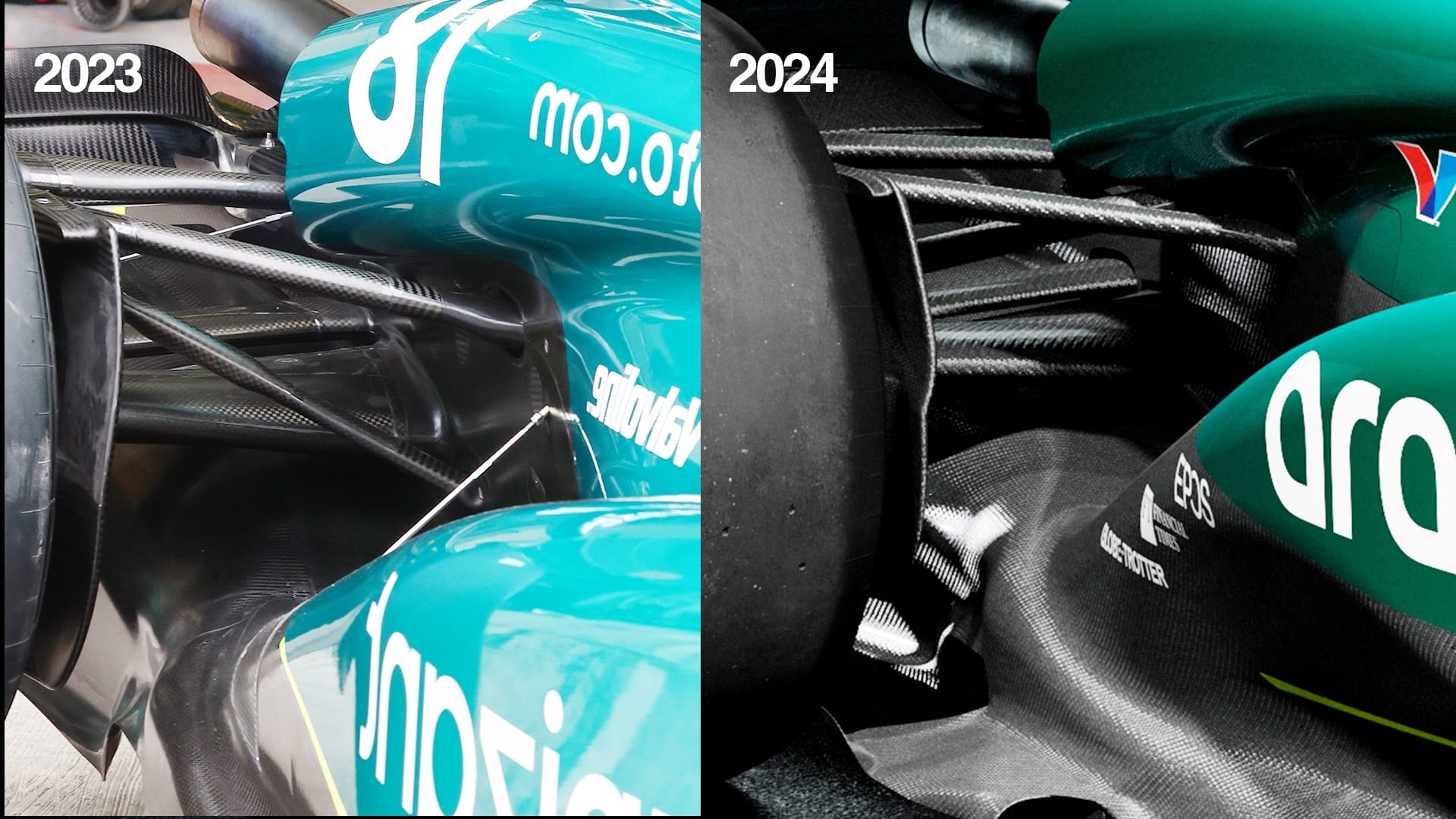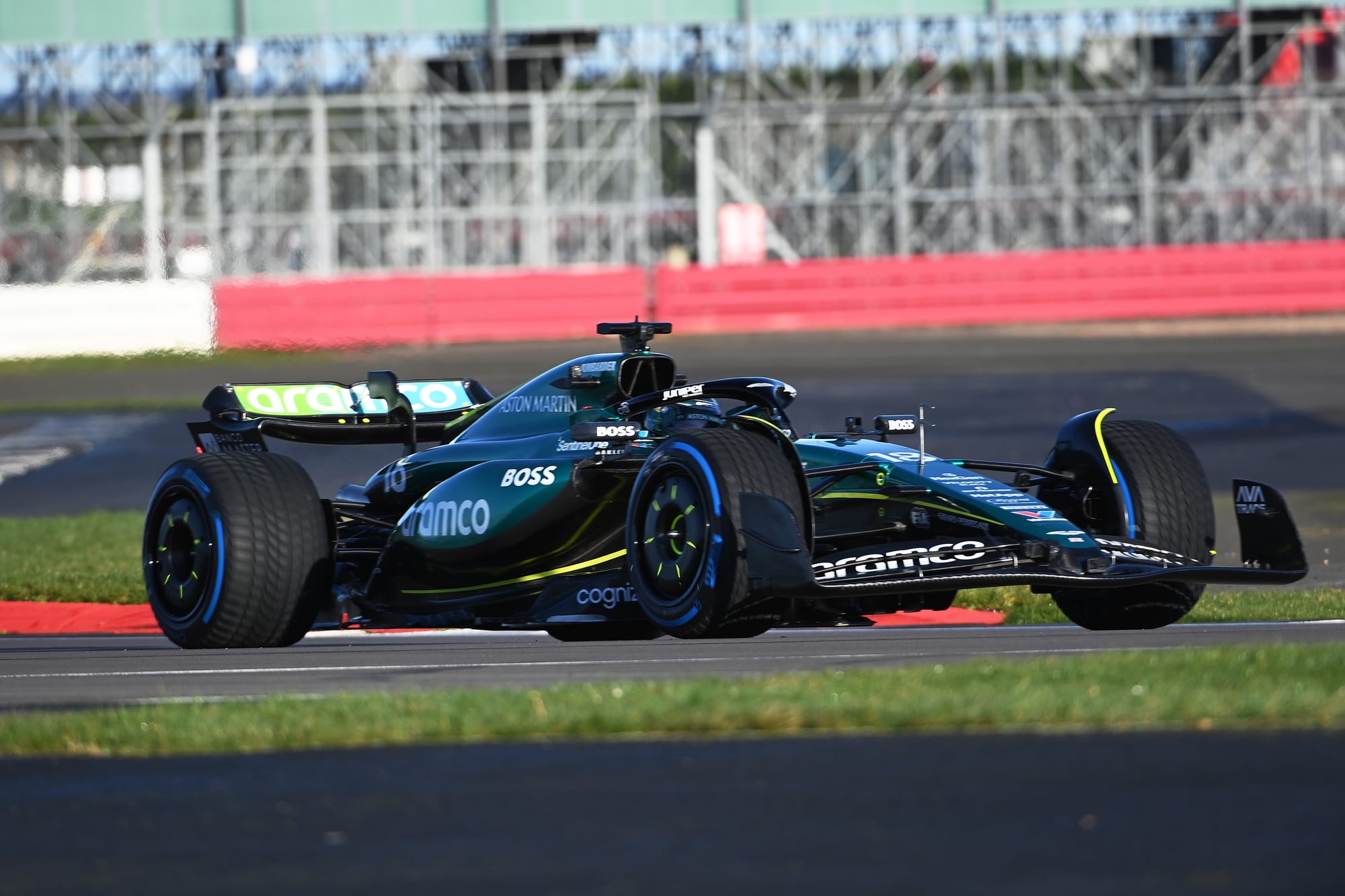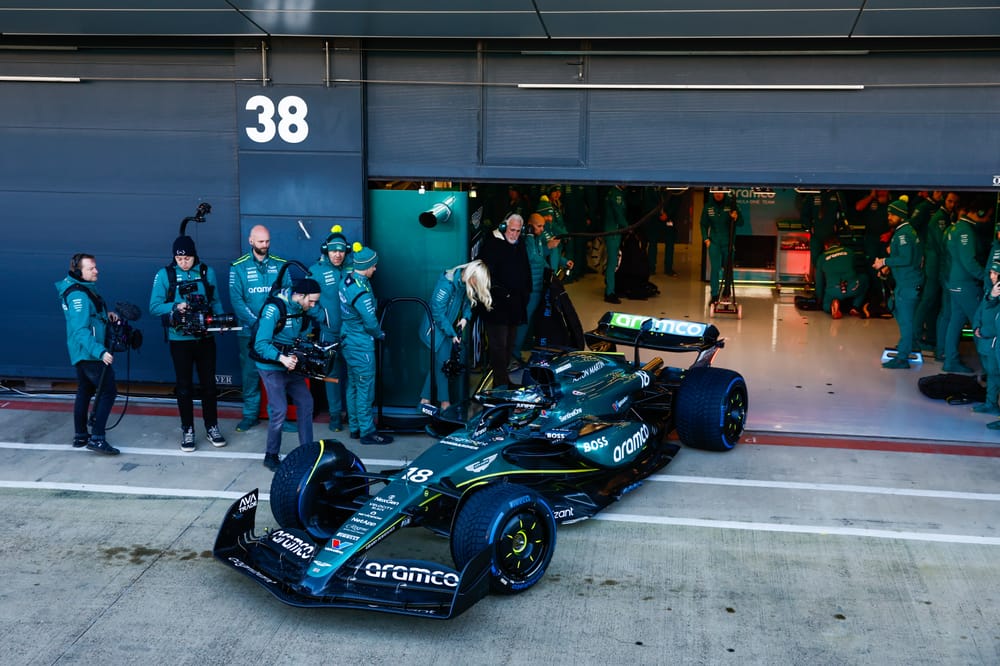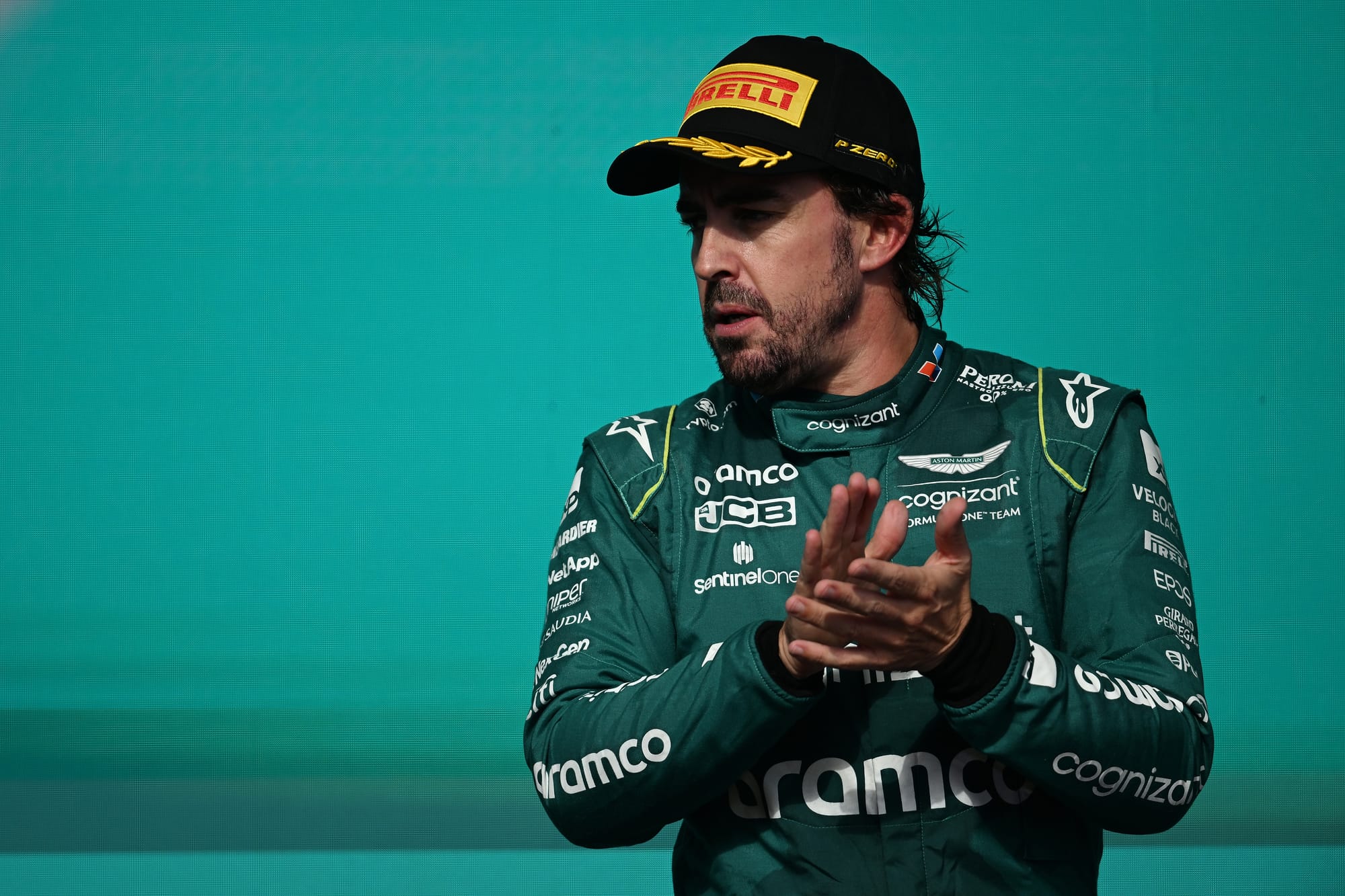Up Next

The Mercedes W15 2024 Formula 1 car won’t be revealed for another two days, but the launch of the Aston Martin AMR24 has confirmed one eagerly-anticipated detail of the new Mercedes: it has switched to pushrod rear suspension.
Aston Martin runs the latest-specification Mercedes gearbox and rear suspension as part of the supply deal that also includes the power unit, meaning it effectively runs a rear end provided by its technical partner.
“The front suspension layout is a similar layout to what we had on the AMR23, still a pushrod,” says technical director Dan Fallows.
“We’ve inherited new suspension from Mercedes, they give us the gearbox and the structure of the rear suspension. That has changed slightly from last year as well. So there's a change on the rear, but the front is very similar.”
Fallows’s use of the word “inherited” indicates this is an aspect of the car architecture Aston Martin has no influence over. However, it’s likely to be a positive change for multiple reasons.

The general consensus is that the pushrod rear suspension configuration has a clear advantage over the pullrod configuration at the rear of the car. It offers greater aerodynamic opportunity, and Aston Martin’s launch press release appeared to support that perception as it stated that “the rear suspension has been optimised to maximise efficiency of airflow around the rear wing”.
As the pushrod mounts higher outboard and lower at the wheel, this means more inboard components are kept higher up. This offers advantages in the shape of the gearbox, which can be a little narrower at the front as a result and offer improvement in the aerodynamic potential of the rest of the bodywork in that area.

This is all part of a change in suspension that Mercedes will have produced to improve the all-important platform control of the car. Crucially, the switch to pushrod rear suspension isn’t the only change as there are also other modifications to the geometry - and doubtless also the inboard parts we cannot see.
The on-track images from Aston Martin's shakedown confirms there is increased anti-squat geometry in the rear suspension. This is all about increasing the control of vertical movement at the rear, which is part of what Mercedes pointed to as a disadvantage last year in terms of platform control.
On the Aston Martin, the forward leg of the upper wishbone is mounted lower than in 2023. As the vertical angle between the forward and rear leg of the upper wishbone is significant in creating anti-squat, this represents an increase compared to last year.
Last year, Mercedes started the season with a car that was an evolution of its 2022 machine. This was based on the belief that having got on top of the bouncing and porpoising problems that blighted it, the car concept would fundamentally work.
That belief proved misplaced and major changes were made in the car concept with a change of development direction that was introduced in Monaco in May. However, this was only a partial shift as Mercedes was limited by the fundamental architecture of its car.
“You’re stuck with your chassis, you’re stuck with your gearbox, to a good degree you’re stuck with your suspension geometry and it’s a bit expensive to change cooling layout,” said Mercedes technical director James Allison late last year when asked by The Race about the architectural limitations of the car.
“Everything else is there to play with. So the limitations are that list and those are the things you get to play with from year to year.
“We will definitely have a new chassis, we will definitely have brand new front and rear suspension and gearbox. None of those things will be the same.”
As a result, it should be expected that Mercedes' monocoque design will be modified.
Aston Martin's car unveiling hasn't answered every question about Mercedes' direction, but it's provided one big piece of the puzzle and strong hints about what else is to come.




